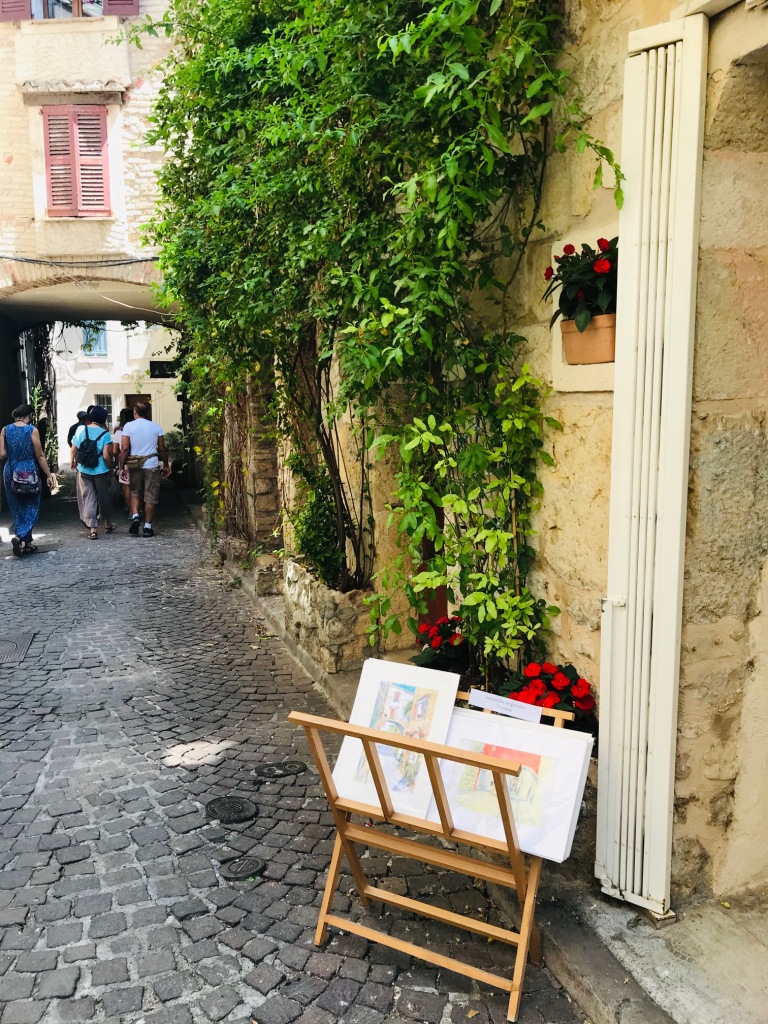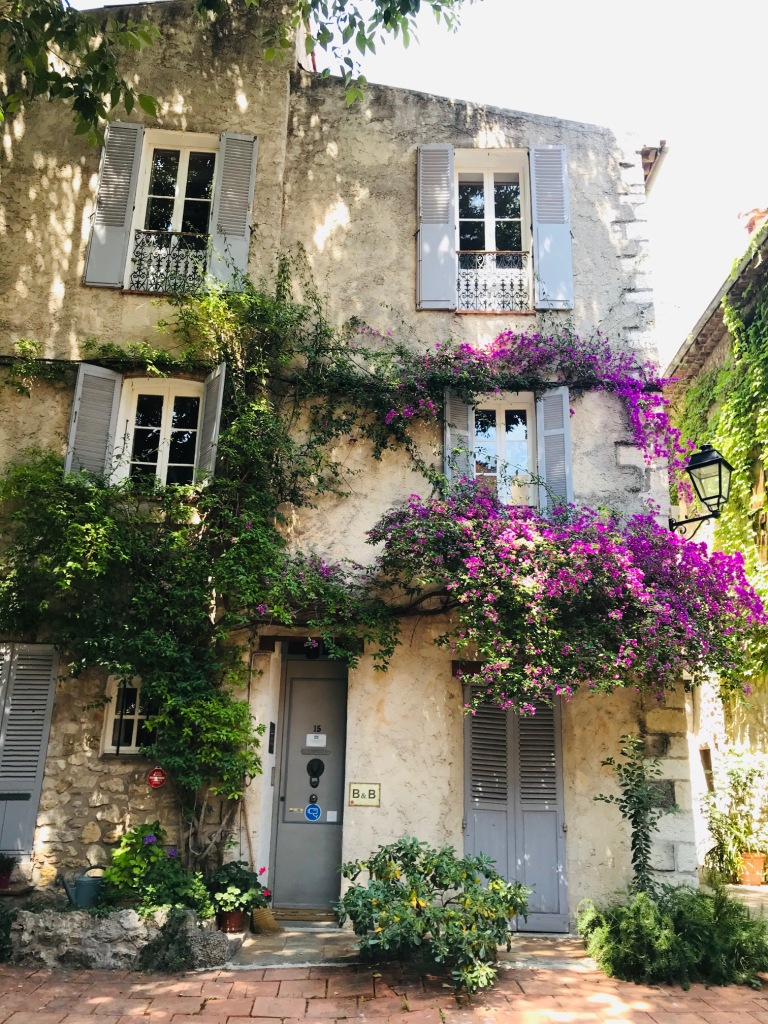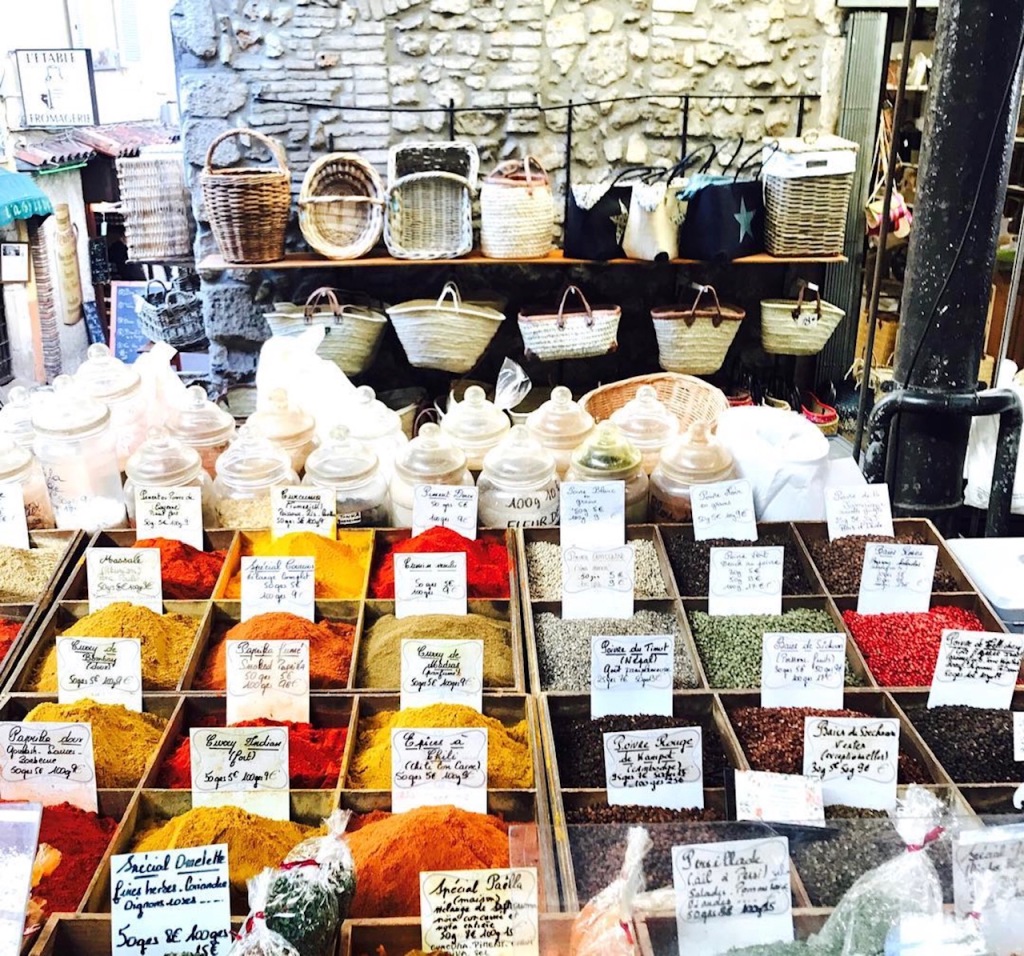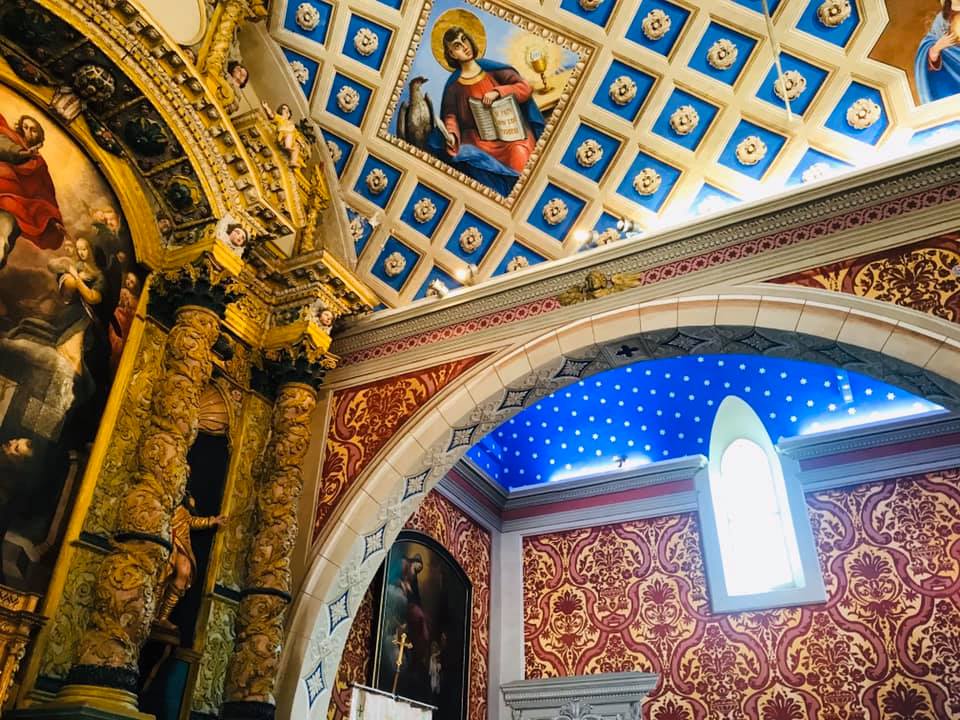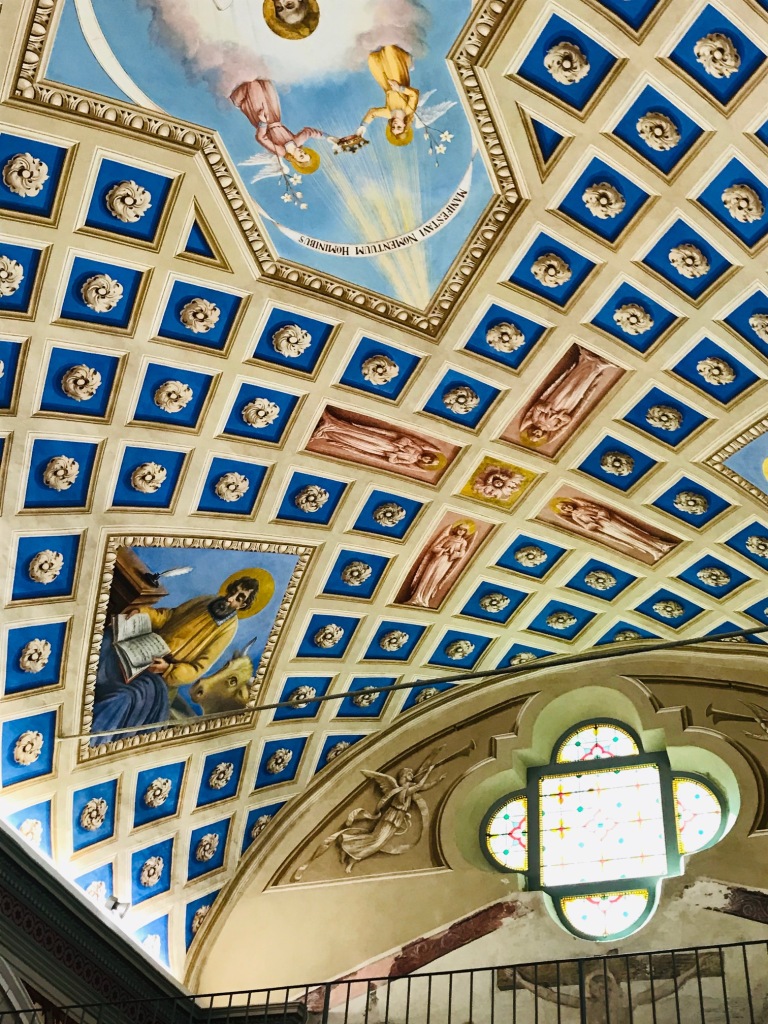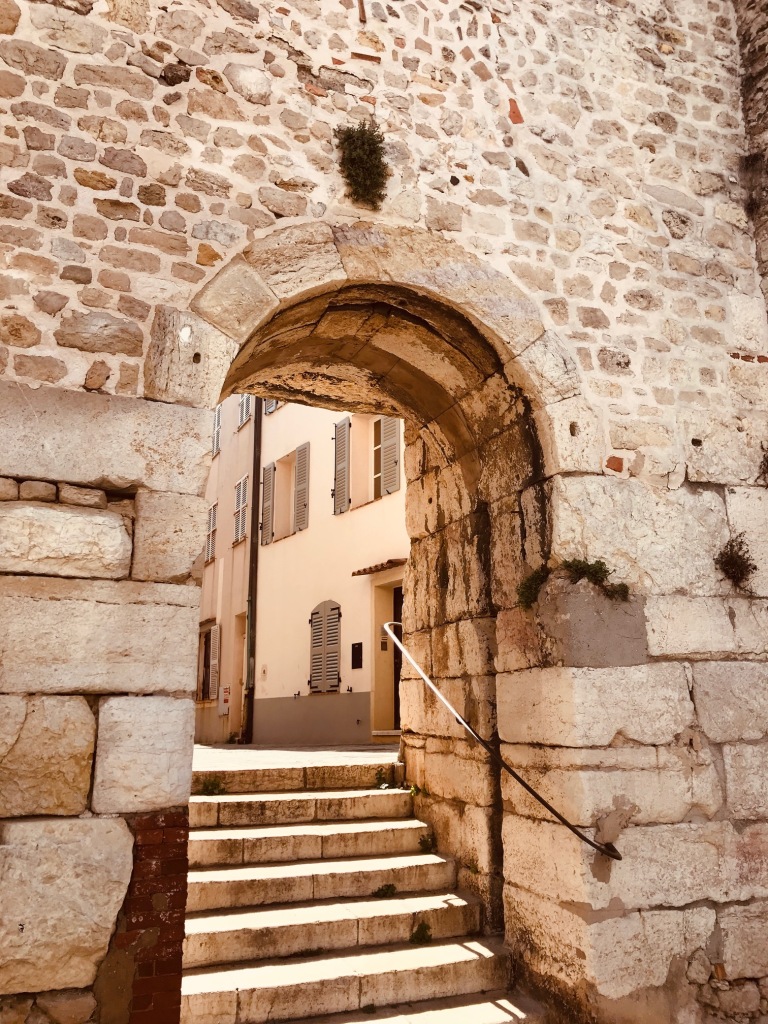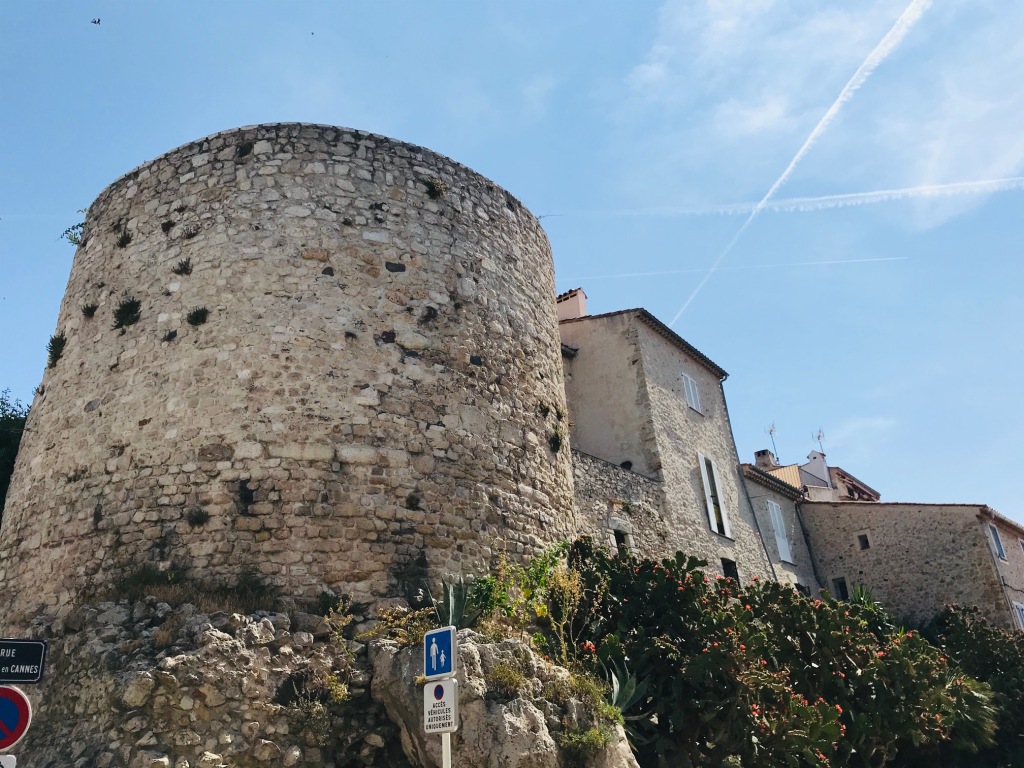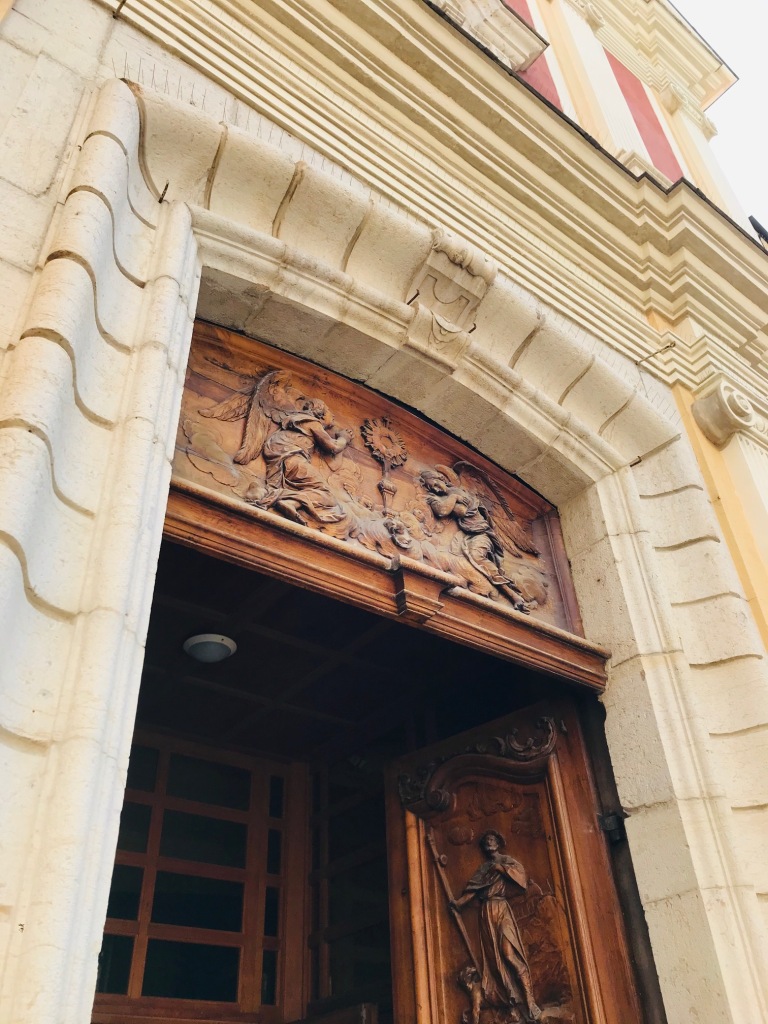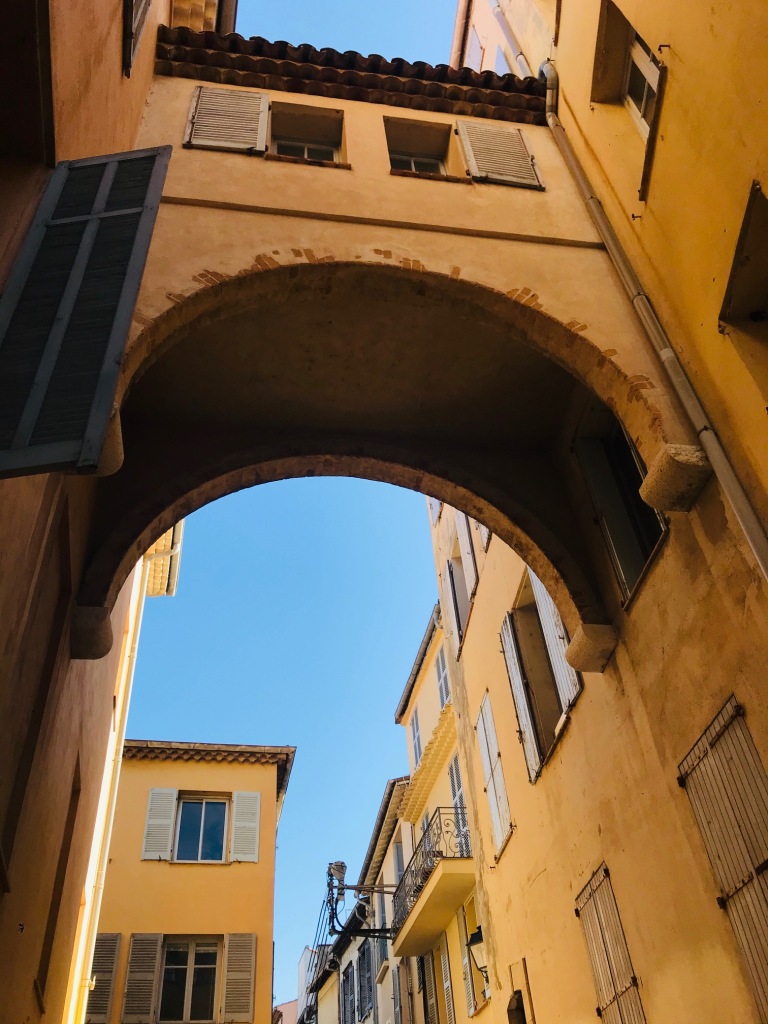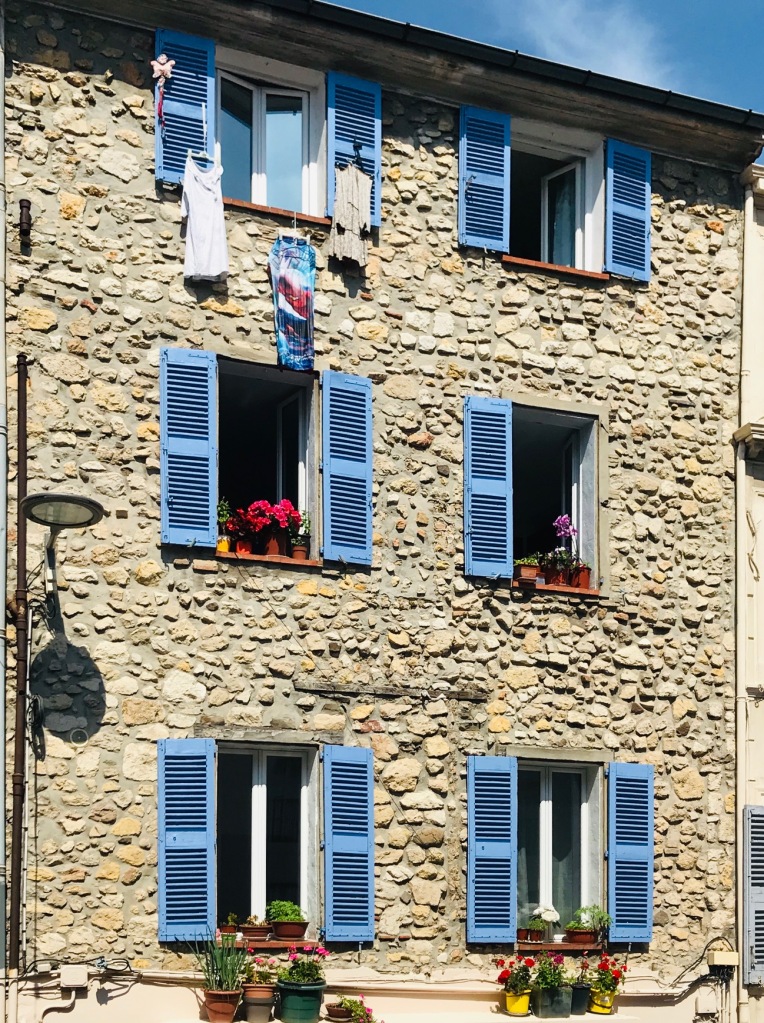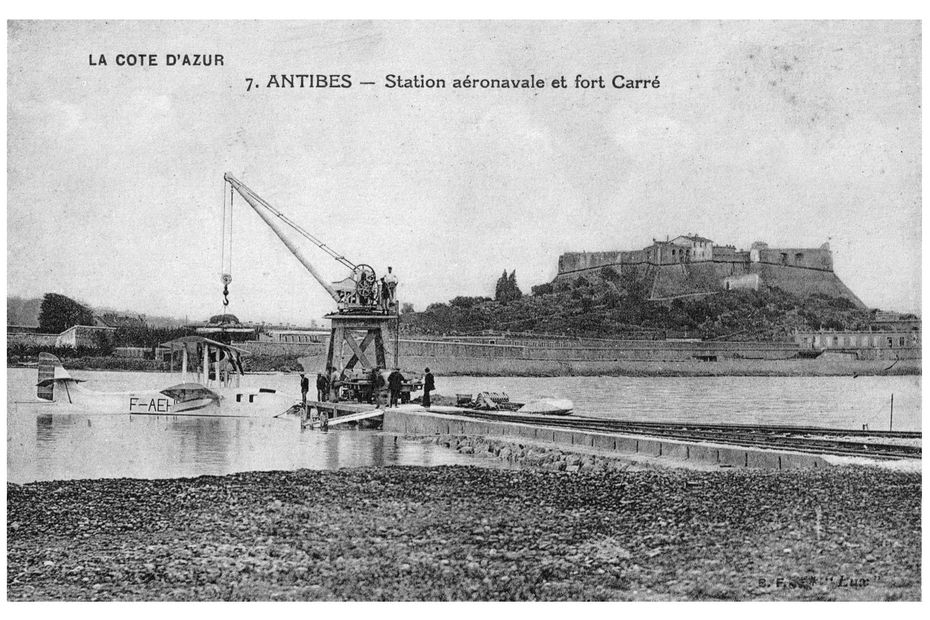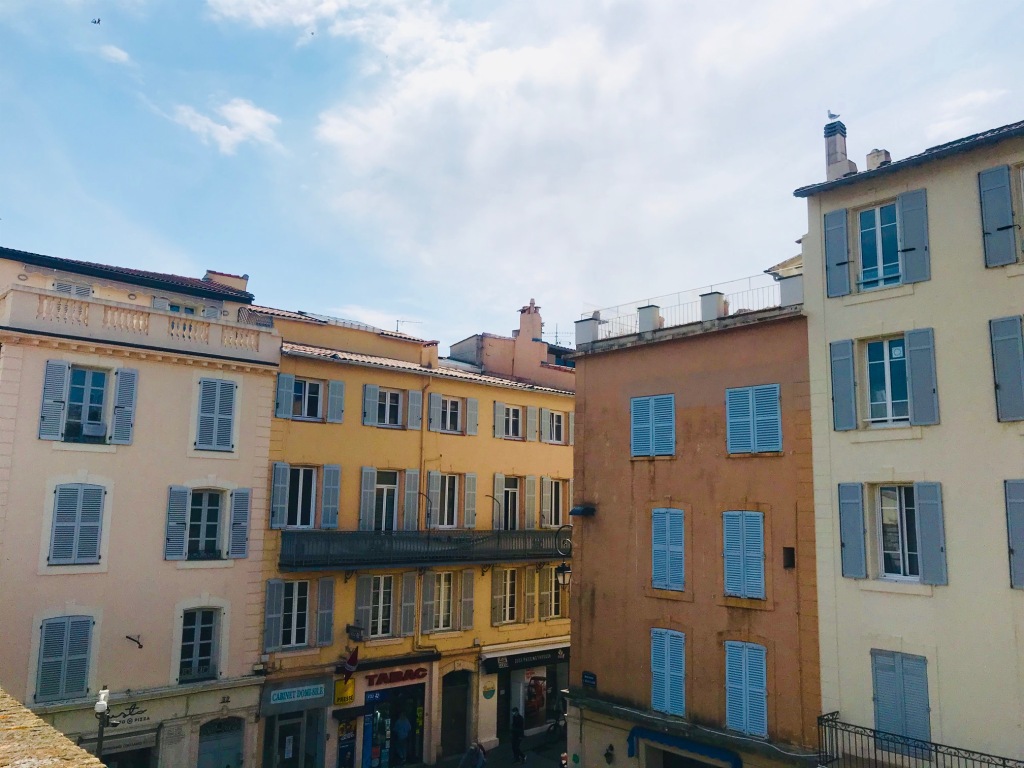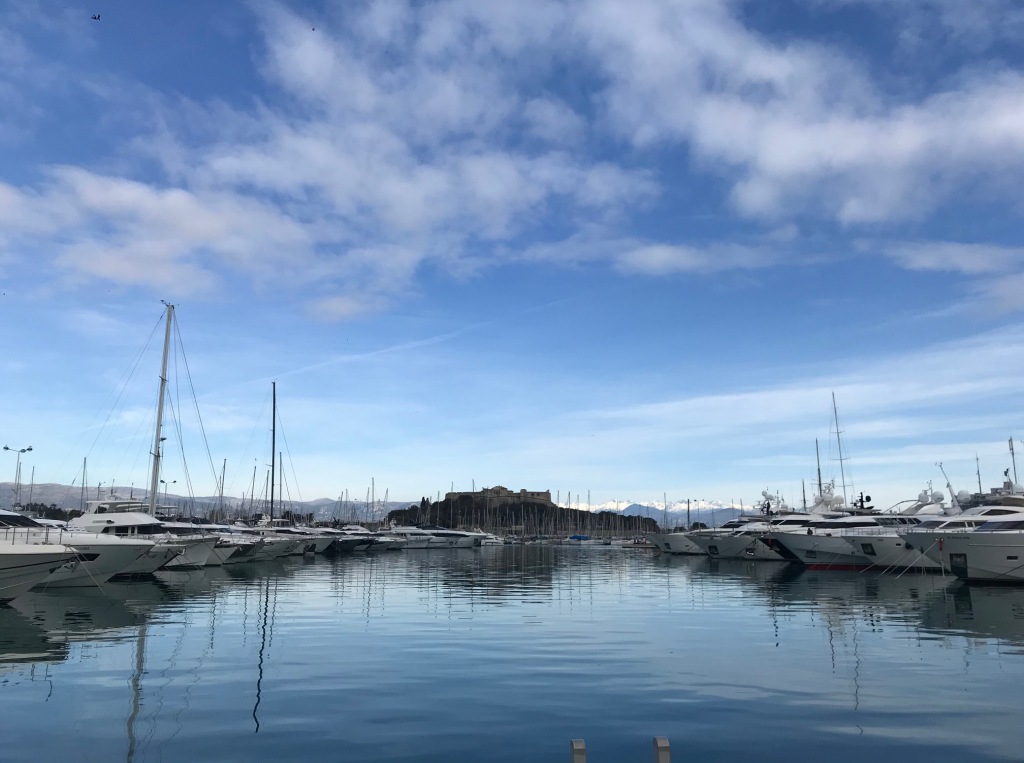On Saturday 12th June, I had the great pleasure to join a walking tour of Antibes. I already know a lot about Antibes’ history including the buildings, museums, art and attractions so I was interested to join this tour and learn more.
Demand for the tour was incredible; the tour was 10x oversubscribed proving Antibes’ popularity with tourists and residents. So, I felt very fortunate to have a spot for the morning tour.
The tour was hosted by Via Nissa. Based in Nice, their team is comprised of historians, linguists and archaeologists who have specialist knowledge about archaeology, art, history, culture and language.
Our small group of 15 met in Antibes opposite Port Vauban with an estimated tour duration from 10am to 11.45am / midday. Prior to the tour, all communication with Via Nissa’s representative had been prompt and helpful.
The tour was conducted in French with English translation; participants could access the French commentary via an easy-to-use hands-free tour guide system and headphones that Via Nissa supplied. Note: The English commentary was via the Uniti app so participants needed to download the app in advance, register to use the app and have mobile Wifi. Participants used their own headphones if using the English commentary option.
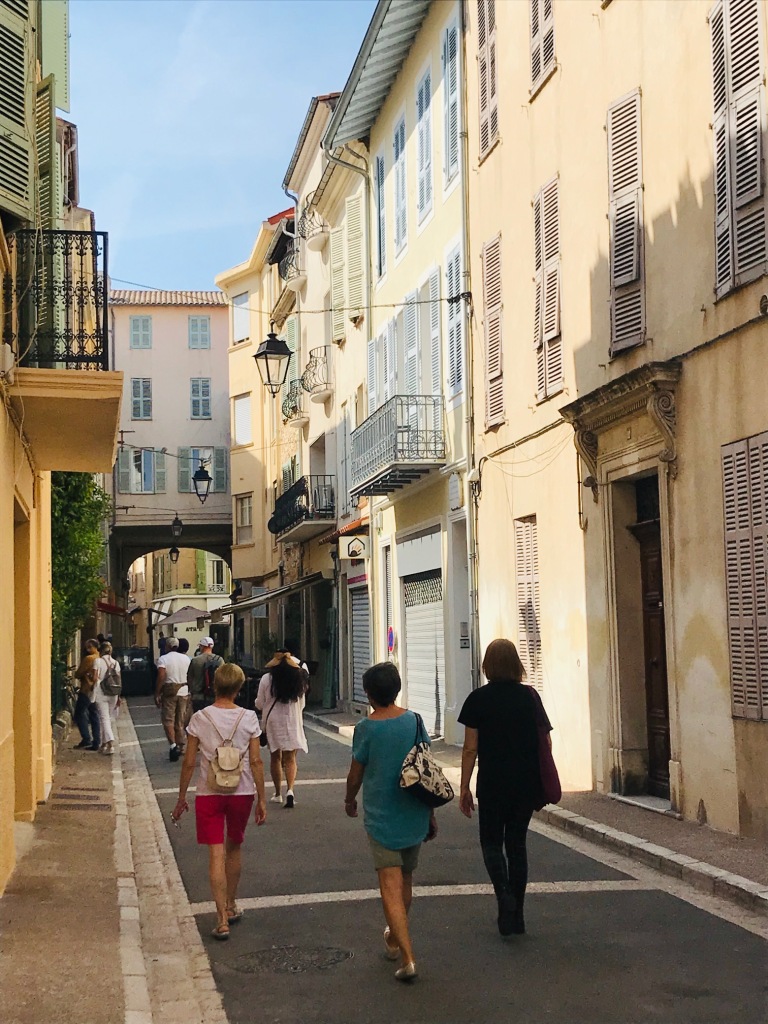
After initial introductions, we met the tour host (French language) – Alain Bottero, who is the archivist for Antibes. Alain has a vast experience as a conservateur and archivist in Antibes and the Alpes Maritimes, so his knowledge of Roman antiquities, archaeology, religious art and the history of Provence and Nice is impressive. Taking care of the English language translation on the day was Evgenia Mokhireva; Evgenia was the person who I dealt with leading up to the tour day and she was helpful, efficient and friendly.
Via Nissa : Antibes Tour Highlights
Even though I have lived in this region for many years, I still find that Antibes is a beautifully picturesque town to explore. As we walked around the Old Town, you stroll beside historic buildings, pass the Cours Massena local market selling Provençal goods and through paved back streets.
It is a ‘touristy’ town with a large expat and yachting community, yet there are parts of French lifestyle and culture here that are distinctly Antiboise – for example, the Safranier district have a quirky traditional ‘boules carrées’ competition each year on July 14 where they play boules in the local streets with square boules.
Some of the tour highlights included the Chapelle Saint Bernardin, the column at Place Nationale, Porte de l’Orme, the old wash house, the commune of Safranier, the city remparts, the Picasso Museum and more.
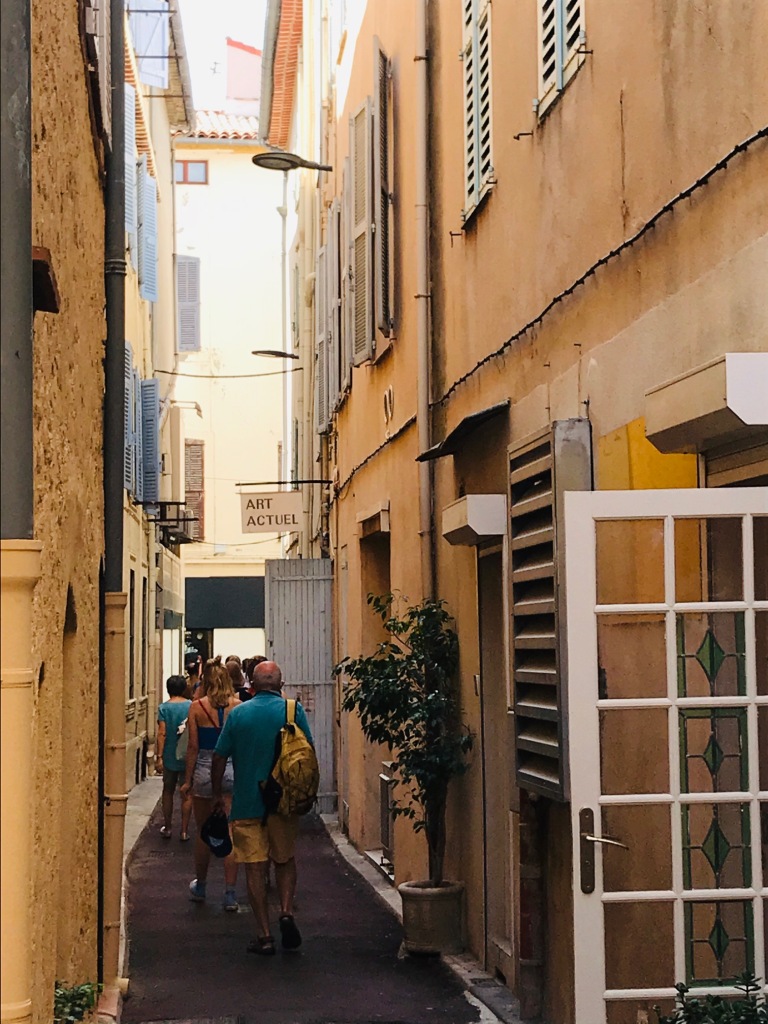
Chapelle Saint Bernardin
This is a spectacular small chapel in Old Town, tucked in off Rue du Docteur Rostan – most tourists would probably pass it by without knowing it was there!
Bernardin Albizeschi was born in the 14th-century in Tuscany, Italy, and entered the Miners brotherhood. He was ordained a priest in September 1404 and spent more than 25 years preaching in Italy, playing a great part in the religious revival of the early 15th-century. He died in Aquila in 1444 and was canonised in 1450 by Pope Nicolas V.
In the 15th-century, the activity of the White Penitent Brotherhood was strong. With their riches they built this chapel.
Features of Chapelle Saint Bernardin:
The Gothic facade on Rue du Docteur Rostan: On the side you can see the hooded penitents. Above the door is the representation of Lucifer’s head. The devil, as the Chimera, the king of serpents and the winged dragon has a tail, sharp claws and a menacing stare. He reigns over 3 worlds: underground, on earth and in the air and can only be vanquished by Saints. The dragon convulses and roars at the foot of the cross and is vanquished by saints and angels.
The altar: The centrally positioned altar features a 16th-century fresco portraying the Apostles table. The baroque twisted columns are decorated with flowers and gold leaf. You can see 3 Saints: Saint Roch, Saint Sebastian (patron Saints of Antibes) and Saint Bernardin of Siena.
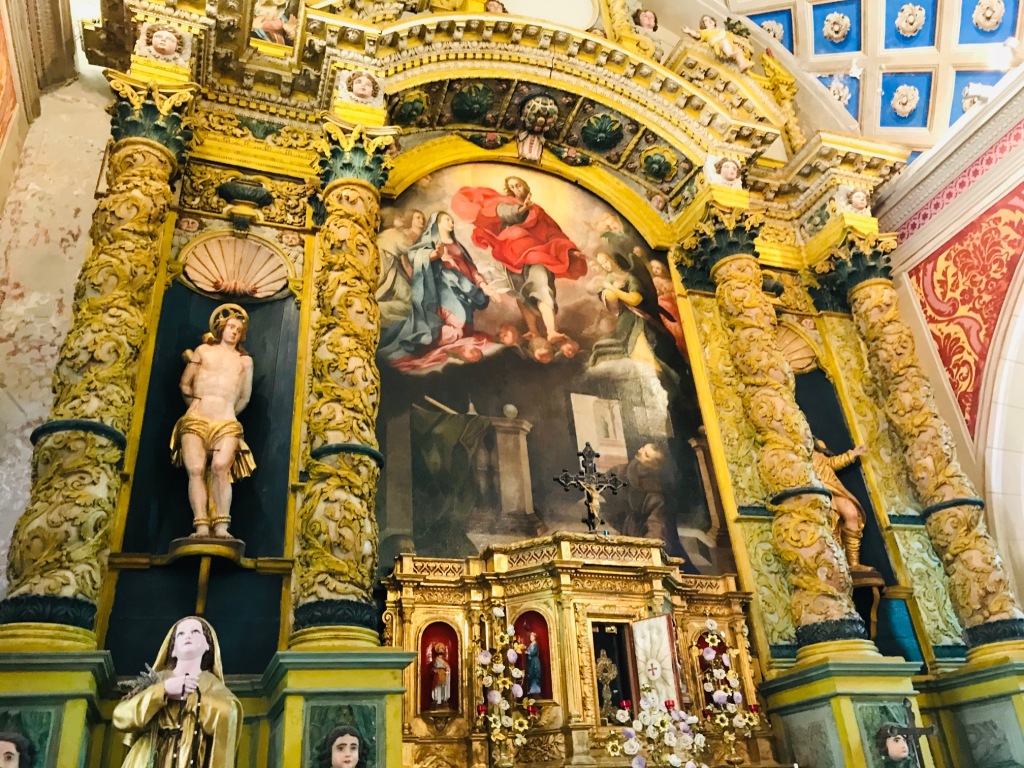
The vaulted room: This room has a climate-controlled storage that contains Antoine Aundi’s painting entitled “The descent from the cross”.

The side door entrance: The chapel was built on Roman ruins and the solid walnut side door leading to Rue Saint Bernardin dates from March 1581; you can see the inscription in my photo below.
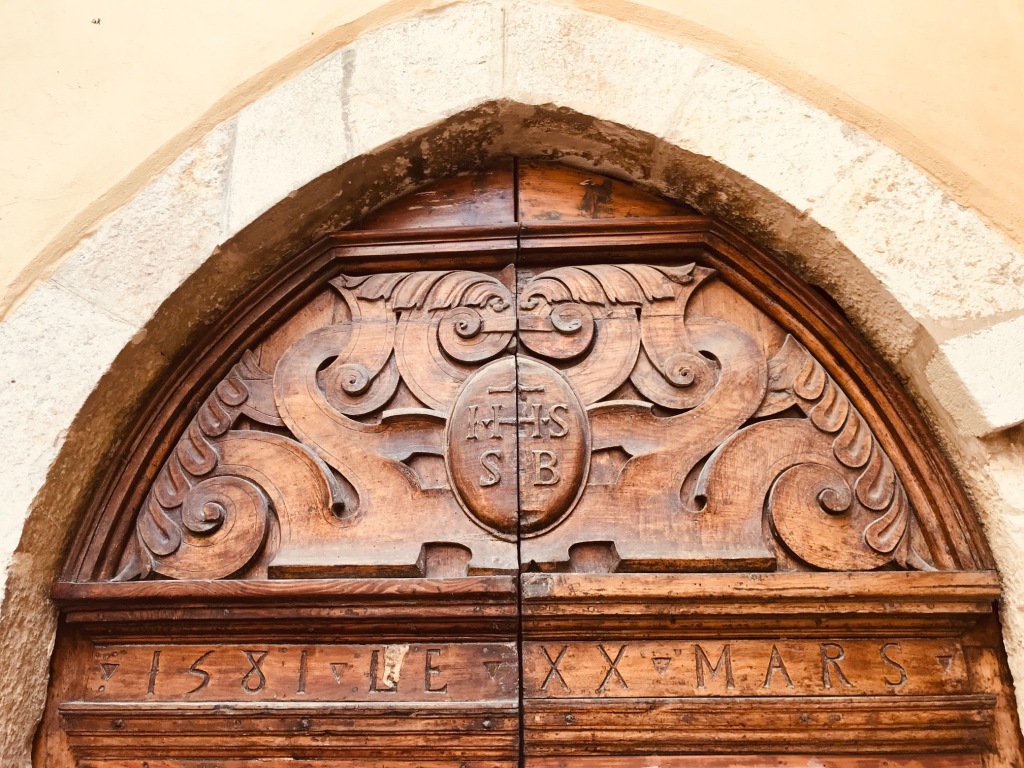
My favourite feature of this small chapel is the beautiful trompe l’oeil and star-studded ceiling. The trompe l’oeil has 4 evangelists around the outside: Saint Mathew (the angel representing Genesis (origin) of man), Saint John (the eagle, his evangelism starts with celestial mystery), Saint Mark (the lion who roars in the desert) and Saint Luc (the bull who symbolises the sacrificed priest and sacrificed cow). In the middle, the Virgin Mary with Christ and Saint Bernardin between them with Latin inscriptions about God and hope in virtue.
The column at Place Nationale
Napoleon, returning from the Island of Elba, landed in nearby Golfe Juan on March 1, 1815; the gates of the city of Antibes were closed to him, it was bombarded and associated with the Bourbon. Louis XVIII moved by the heroism of the city of Antibes took 90,000 Francs from his personal funds intended to repair the damage, and on March 20, 1816 he raised the city to the rank of the good cities of the kingdom “Fidei servandae exemplum 1815”.
In gratitude, the city of Antibes erected this column to Louis XVIII. It’s made of Carrara marble and cost the sum of 5748 Francs.
Its pedestal is covered with four marble slabs, on each side:
– the inscription of the ordinance of King Louis XVIII
– the arms of France
– the arms of the city of Antibes
– the inscription of the King “the conduct of the city of Antibes will never leave my memory.”
Unfortunately, I accidentally deleted the photos I had of the column but you can see it clearly at Place Nationale directly in front of the Musée Peynet.
Porte de l’Orme
The Porte de l’Orme and its towers is one of the best preserved parts of Antibes. Throughout the Middle Ages, the walls were maintained until they were reinforced by the Grimaldi lords in the late 16th-century. It was the first line of defence for the castle, now known at the Picasso Museum. The Porte de l’Orme has been historically listed since 1939 and along with the towers and walls it defines the old city limits.
The old lavoir (wash house)
Tucked in behind Rue de la Tourraque, the old lavoir (wash house) was one of three local wash houses where town residents came to wash their clothes. Of course, it was a meeting place too so no doubt there was some gossiping that went on! If you look closely at the walls surrounding the wash house there are small sculptures set into the stone work – angels, faces, hands – these were made by Ho Lui, a local sculptor who has an atelier on Rue James Close.
The commune libre de Safranier (the free commune of Safranier)
Safranier is a picturesque district in old town with flower-filled streets – lots of tourists head here to take Instagram photos particularly on rue du Bas Castelet and rue du Haut Castelet. Villa Fontaine is situated in Safranier where they have an artists in residence programme, and Cretan writer Nikos Kazantzaki used to live in this district (he was famous for writing Zorbas the Greek and ‘The Odyssey: A Modern Sequel’ which was his poem based on Homer’s Odyssey) – you can see a commemorative seat dedicated to him in Safranier with a famous motto from the Zorbas film: “I hope nothing, I fear nothing, I am free”.

Antibes remparts
The remparts stretch from the port in Antibes to Bastion Saint-Andre near Salis beach. The Bastion was built in 1698 by Vauban, it consists of two vaulted brick galleries surmounted by a vast paved terrace. Historically listed in 1930, below is the Archaeology Museum that has a collection begun in the 15th-century, with 150 exhibits including ceramics, vases and mosaics, some dating back more than 2000 years.
In 1979, there was a collapse of the seabed off the coast of Nice which was simultaneous with the collapse of a dike at the Nice port end. The result was two mini tsunamis which hit the coastline; including at Salis beach in Antibes. The remparts remained undamaged.
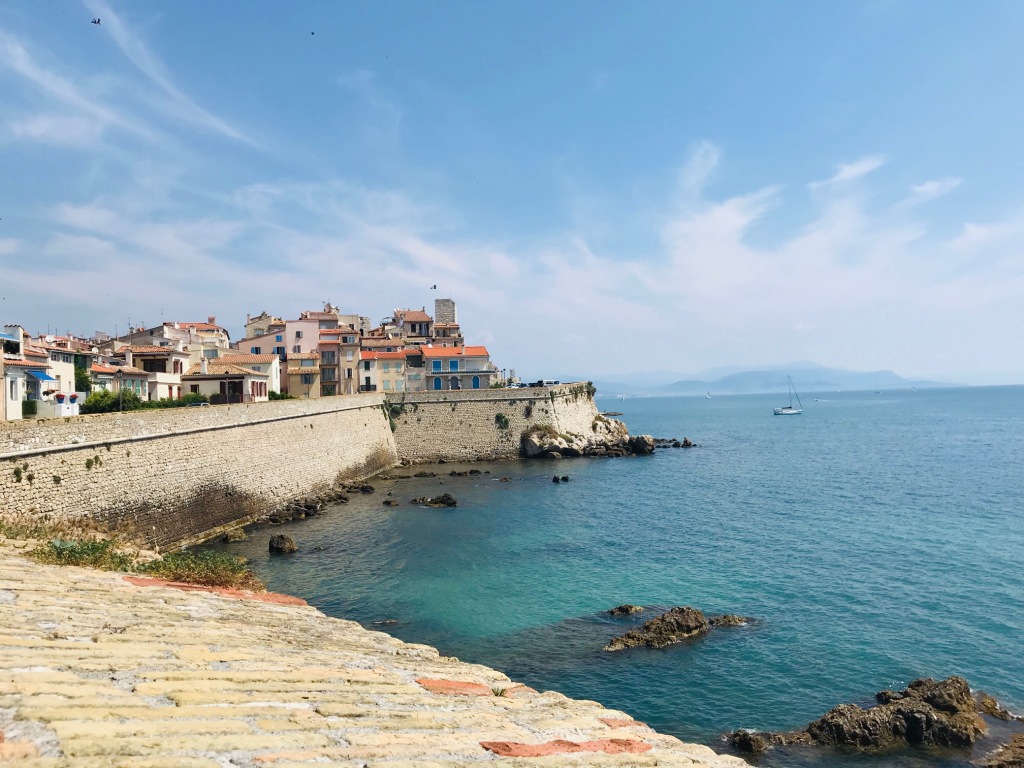
Picasso Museum
The Picasso Museum is one of the popular attractions of Antibes. Originally the ancient Château Grimaldi, it is now the first museum dedicated to Picasso. The collection, originally composed of paintings, drawings and ceramics left by the artist, also houses artwork from many other artists including Germaine Richier, Joan Miró, Nicolas de Staël, Hans Hartung and Yves Klein.
Beside the Picasso Museum, you can see the beautiful Antibes Cathedral.
Fort Carré & Port Vauban
No visit to Antibes would be complete without wondering about the history of Fort Carré across from the town. The star-shaped fort is a historic monument and was one of the first fortified strongholds to be built in the Renaissance under the orders of the King of France, Henri II. It was used to guard the nearby border with the County of Nice and to defend the town of Antibes. Today, you can visit the fort by guided tours that can be arranged through the Antibes tourist office and it is open to the public during the Journées du Patrimoine (we didn’t visit Fort Carré on this particular tour, however there is a great view from the fortress ramparts over Port Vauban and across to old town Antibes).
One of the most surprising things I learned recently about Antibes was there used to be a sea plane base at Port Vauban in the 1920’s. Alain our tour guide knew about this of course – L’Aéronavale used to fly between Antibes and Corsica, passengers were so used to travelling by boat that flying was viewed as reckless. Putting the seaplanes into the water at Port Vauban wasn’t easy – they were transported on trolleys to the wharf where a crane lifted them into the water. You can see in the vintage photos below the seaplanes and cranes opposite Fort Carré, as well as the hangars that used to house them. This hangar area is now where the Antibes ferris wheel at Pré des Pêcheurs is located.
About Via Nissa
Based in Nice, France, Via Nissa, specialises in organising in-depth experiences for seasoned travellers, the local foreign community and their visitors: those who want to be in the Côte d’Azur not as a detached observer, but as hands-on participants seeking uncommon access. They also curate historical tours, taking their visitors beyond the spaces allocated to tourists, into a world typically available only to insiders. Their sixth-sense experiences take you back to the world of the Provence many recall from the movies… scenes of long leisurely lunches, fine wines and stimulating conversations.
Disclaimer: I was not sponsored to join this tour, nor am I an affiliate partner or salesperson for Via Nissa. This review is my own unbiased and honest account of the tour that I experienced. I highly recommend Via Nissa if you want a tour that immerses you in the history and culture of a destination.

